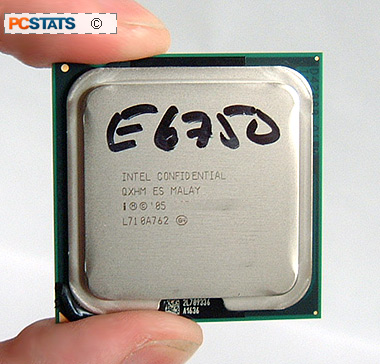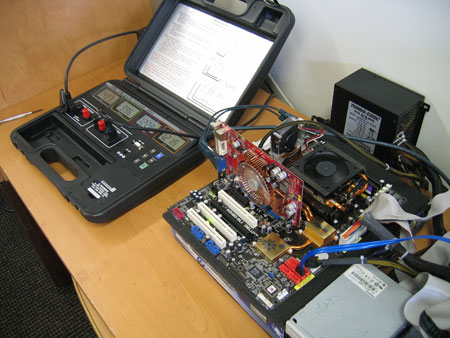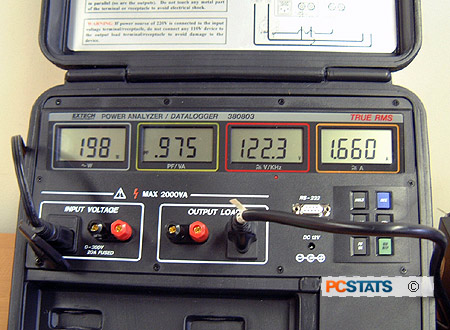 Gone are the days when
performance benchmarks settled all Intel vs. AMD processor debates. With
increased awareness of our Carbon footprints, it is equally important to choose
computer hardware that consumes as little electricity as possible. Energy
efficiency is in, and if electrical bills don't motivate you then reduced heat
output and quieter cooling system will certainly make your head turn.
Gone are the days when
performance benchmarks settled all Intel vs. AMD processor debates. With
increased awareness of our Carbon footprints, it is equally important to choose
computer hardware that consumes as little electricity as possible. Energy
efficiency is in, and if electrical bills don't motivate you then reduced heat
output and quieter cooling system will certainly make your head turn.
Perhaps
it's only when we consider the 24x7x365 electrical operating cost of a computer
that any reduction in power consumption musters attention, but there it is. In a
sense, what's happening now parallels the transition from loud computers to the
silent PC esthetic. Before hot-running computer processors went quiet,
enthusiasts' attempts to reduce the PC noise were exceptions to the rule, rather
than the norm.
An entire
industry now thrives on selling quiet computer hardware, and the same is
beginning to happen with energy efficient desktop processors, power supplies and
even hard drives. PCSTATS is pleased to see the computer industry moving forward
in a positive energy efficiency direction. Bonus points to anyone in the crowd
reading this who has an 80+ certified in their PC right now, you're leading the
way.
Energy
efficient components is certainly a new aspect PCSTATS will be considering as we
mull over the benchmark results for the Intel Core 2 Duo E6750 processor. Now,
let's start off with total system power draw tests.
Core 2 Duo E6750 Total System Power Consumption Tests
 The cost of energy is
increasing world wide, so any reduction in the amount of power a CPU requires is
welcome. Wading through the technical numbers to figure out the differences can
be confusing because Intel and AMD report power values in slightly different
ways.
The cost of energy is
increasing world wide, so any reduction in the amount of power a CPU requires is
welcome. Wading through the technical numbers to figure out the differences can
be confusing because Intel and AMD report power values in slightly different
ways.
AMD reports
maximum power consumption while Intel posts typical values. Obviously the two wattage figures are
not comparable and to find out which actually consumes more power, we have to
test things out.
Representing Intel will be a Core 2 Duo E6600, Pentium D 940, Pentium D 840, and Pentium 4 540 processor. Standing in for AMD are the
socket AM2 Athlon64 X2 4800+, Sempron 3600+, Athlon64 FX-62, Athlon64 X2 5000+, and socket 939 Athlon64 4000+ and Athlon64 FX-60 processor.
The test
specs for each system are kept as constant as possible: Akasa PowerPlus AK-P550FF power supply, Western Digital 74GB Raptor hard drive, an 8x Gigabyte
DVD-/+RW drive and a MSI NX6600GT-TD128E videocard.
Cool 'n'
Quiet is disabled for these tests because with Cool 'n' Quiet enabled, total
system power draw will be even less that what is reported. A picture of the
total system power draw test configuration is shown at right. The Extech Power
Analyzer is located between the mains 120AC supply and the PC's power
supply.
 |
PCSTATS uses an
Extech model 380803 Power Analyzer
Datalogger for measuring CPU power & total system power draw.
The tool can be found here if you would like
to replicate these microprocessor power measurements yourself. The test
setup is illustrated above, but obviously with different hardware than the
E6750 was tested with. |
To simulate
single-core load, the Prime95 Small FFTs test was run, and two instances
launched for dual core loading. Total system power consumption was read with the
Extech Power Analyzer Datalogger (model 380803) for both CPU loaded and CPU idle
states. These wattage values are measuring an entire
system while the processor is running under computational load or
idle.
Those power draw test results are next...
